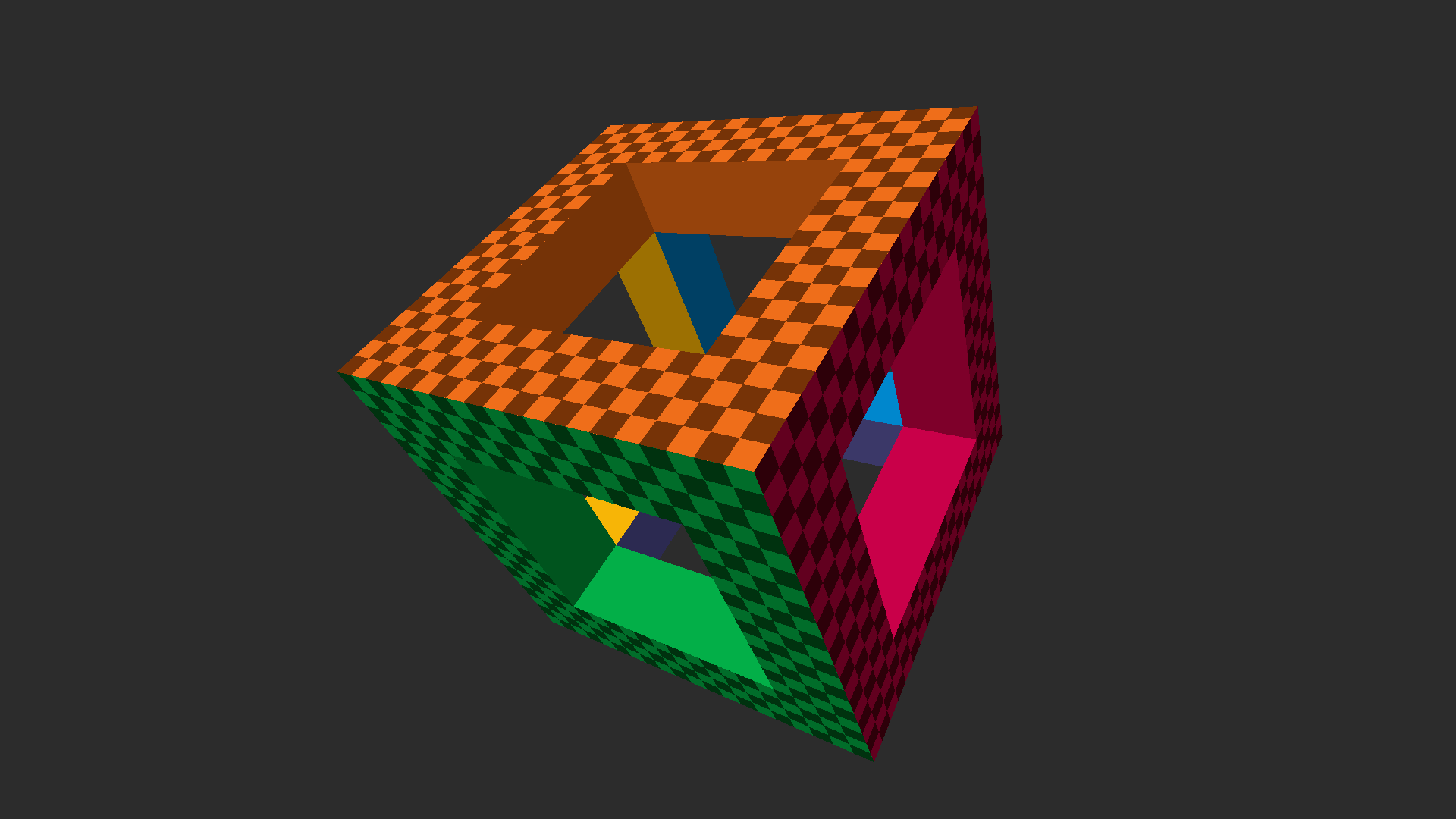- 2011 - A trip through the Graphics Pipeline 2011
- 2013 - Performance Optimization Guidelines and the GPU Architecture behind them
- 2015 - Life of a triangle - NVIDIA's logical pipeline
- 2015 - Render Hell 2.0
- 2016 - How bad are small triangles on GPU and why?
- 2017 - GPU Performance for Game Artists
- 2019 - Understanding the anatomy of GPUs using Pokémon
| package main | |
| import "core:fmt" | |
| import "core:math" | |
| import "core:math/linalg" | |
| import rl "vendor:raylib" | |
| main :: proc() { | |
| rl.SetConfigFlags({.VSYNC_HINT, .WINDOW_RESIZABLE, .MSAA_4X_HINT}) | |
| rl.InitWindow(800, 600, "collision") |
| Complete stuff: | |
| https://xmonader.github.io/letsbuildacompiler-pretty/ | |
| Lexers + DFAs: | |
| https://gist.github.com/pervognsen/218ea17743e1442e59bb60d29b1aa725 | |
| Parsing: | |
| https://eli.thegreenplace.net/2012/08/02/parsing-expressions-by-precedence-climbing | |
| Backend: |
| #pragma once | |
| // uncompressed png writer & reader | |
| // supports only 8-bit and 16-bit formats | |
| // Performance comparison for 8192x8192 BGRA8 image (256MB) | |
| // Compiled with "clang -O2", AVX2 requires extra "-mavx2" or "/arch:AVX2" argument | |
| // | |
| // For libpng (compressed) uses default libpng/zlib compression settings | |
| // For libpng (uncompressed) case following two functions are used: |
| package ldtk | |
| import "core:encoding/json" | |
| import "core:os" | |
| import "core:fmt" | |
| load_from_file :: proc(filename: string, allocator := context.allocator) -> Maybe(Project) { | |
| data, ok := os.read_entire_file(filename, allocator) | |
| if !ok { | |
| return nil |
| package block_allocator | |
| // Allocator based on Sebastian Aaltonen's Offset Allocator: | |
| // https://github.com/sebbbi/OffsetAllocator/blob/main/offsetAllocator.cpp | |
| import "core:fmt" | |
| import "core:math/bits" | |
| import "core:math/rand" | |
| assert_allocator_layout_good :: proc(allocator: ^Block_Allocator) { |
| // generic A* pathfinding | |
| // | |
| // INTERFACE | |
| // | |
| // mandatory macros | |
| #ifndef ASTAR_POS_TYPE | |
| #error ASTAR_POS_TYPE should specify position type |
Minimal D3D11 reference implementation: An uncluttered Direct3D 11 setup + basic rendering primer and API familiarizer. Complete, runnable Windows application contained in a single function and laid out in a linear, step-by-step fashion that should be easy to follow from the code alone. ~200 LOC. No modern C++, OOP or (other) obscuring cruft. View on YouTube
| # source:http://geocities.com/SiliconValley/heights/7052/opcode.txt | |
| From: [email protected] (Mark Hopkins) | |
| Newsgroups: alt.lang.asm | |
| Subject: A Summary of the 80486 Opcodes and Instructions | |
| (1) The 80x86 is an Octal Machine | |
| This is a follow-up and revision of an article posted in alt.lang.asm on | |
| 7-5-92 concerning the 80x86 instruction encoding. | |
| The only proper way to understand 80x86 coding is to realize that ALL 80x86 |
The Gilbert–Johnson–Keerthi (GJK) distance algorithm is a method of determining the minimum distance between two convex sets. The algorithm's stability, speed which operates in near-constant time, and small storage footprint make it popular for realtime collision detection.
Unlike many other distance algorithms, it has no requirments on geometry data to be stored in any specific format, but instead relies solely on a support function to iteratively generate closer simplices to the correct answer using the Minkowski sum (CSO) of two convex shapes.
